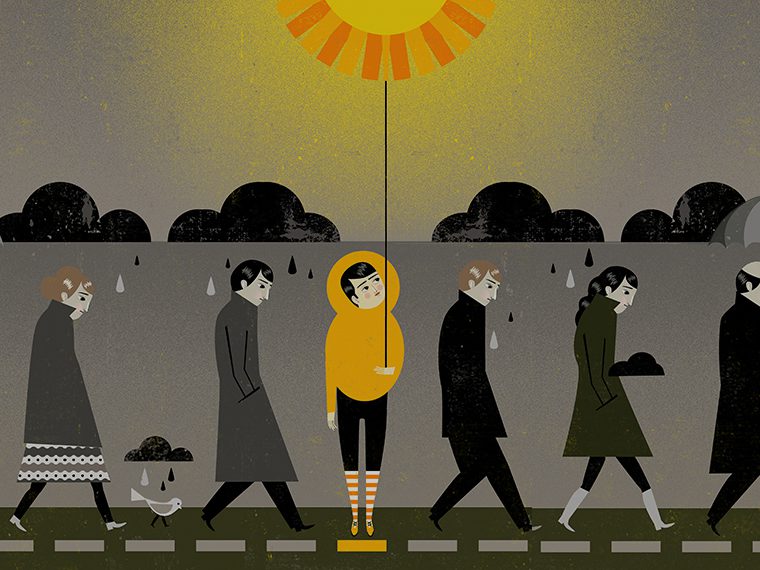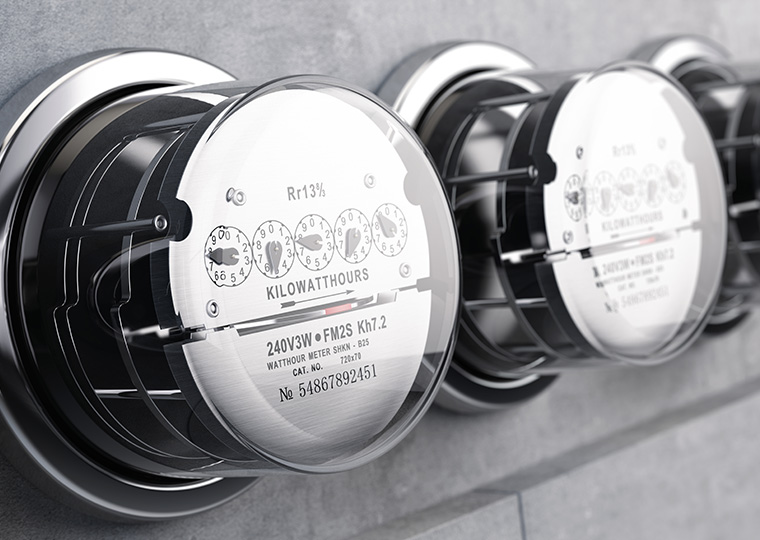The same message that works with U.S. households is effective in the developing world
In developing countries, a growing middle class means soaring demand for energy, and with it a potentially catastrophic increase in climate-changing greenhouse gases. Convincing households to conserve, then, is critical to stemming the rise in global temperatures.
It’s well known that informing people about their energy use can motivate them to be more efficient. But less is understood about which messages work best in places like India, where millions are rising out of poverty. Some think that stressing cost savings is the way to go, since energy expenses account for a large part of a family’s income. Others maintain that conservation is already deeply ingrained among people experienced at managing scarce resources, leaving little room for greater savings.
A paper published in Energy Economics suggests a different conclusion: Highlight the health and environmental benefits of curbing energy use — which is the same message that works with middle-class consumers in the U.S.
Opt In to the Review Monthly Email Update.
In a study of 19 middle-class Delhi households, observed during an academic year, researchers found that a health-based message was significantly more effective than messages highlighting the cost savings. The findings — by UCLA Anderson’s Magali Delmas, Victor Chen of UCLA’s Department of Engineering, Stephen Locke of Western Kentucky University and Amarjeet Singh of the Indraprasha Institute of Information Technology in New Delhi — are similar to those in an earlier study by Delmas and co-author Omar I. Asensio (now with the Georgia Institute of Technology) of conservation messaging aimed at Los Angeles households.
The results suggest that conservation campaigns that work in the developed world can be effective elsewhere. “It is possible,” the authors write, “that motivations for energy conservation become more alike as differences in income and education between middle class in India and developed countries diminish.”
The U.S. Energy Information Administration projects that the developing world will account for 65 percent of world energy demand by 2040. Researchers attribute most of that increase to the rise of households out of poverty and into the middle class.
India is typical of the trend. The middle-class population is projected to double by 2026 to 547 million people, and electricity consumption has increased about 9 percent per year since 2006. The country is now the fourth largest energy user in the world after China, the U.S. and Russia, and it is among the least efficient. Two-thirds of power generation come from coal-fired plants, contributing significantly to air pollution.
The authors conducted a field experiment among residents of a faculty housing complex on the campus of the Indian Institute of Technology Delhi. Households were given technology that measured their energy consumption every 15 minutes and displayed the results on online dashboards families could access from their computers.
In addition, households received weekly emails describing their electricity use. One group was told how their energy costs compared with those of efficient households, while another group was told how much pollution was produced by the electricity they used. (A control group received no messages.) The pollution message also warned that the pollutants contribute to childhood asthma and cancer.
Going into the experiment, the authors write, they expected the monetary message to be more effective. A 2013 survey of Indian households found that of those who regularly took steps to save energy, 84 percent said saving money was the main reason, and only 9 percent cited the health of their families as the motivating factor.
But in the experiment, households that received messages about monetary savings showed no significant reduction in energy consumption when compared with the control group, while those that received the health messages reduced energy use by 18.4 percent. Similarly, in the U.S. study, L.A. households receiving the health message reduced energy use by about 9 percent over the course of the study, while the financial-message group showed no significant decrease.
As with the U.S. study, Indian consumers didn’t think the financial savings — which amounted to about 327 rupees, or $4.78, per month — were enough to justify changing their behavior. Meanwhile, the authors suggest, health appeals work because they help consumers make the not-obvious connection between their electricity use at home and pollution in the air.
Featured Faculty
-
Magali Delmas
Professor of Management; Faculty Director, Impact@Anderson
About the Research
Chen, V.L., Delmas, M.A., Locke, S.L., & Singh, A. (2017). Information strategies for energy conservation: A field experiment in India. Energy Economics, 68, 215–227.






